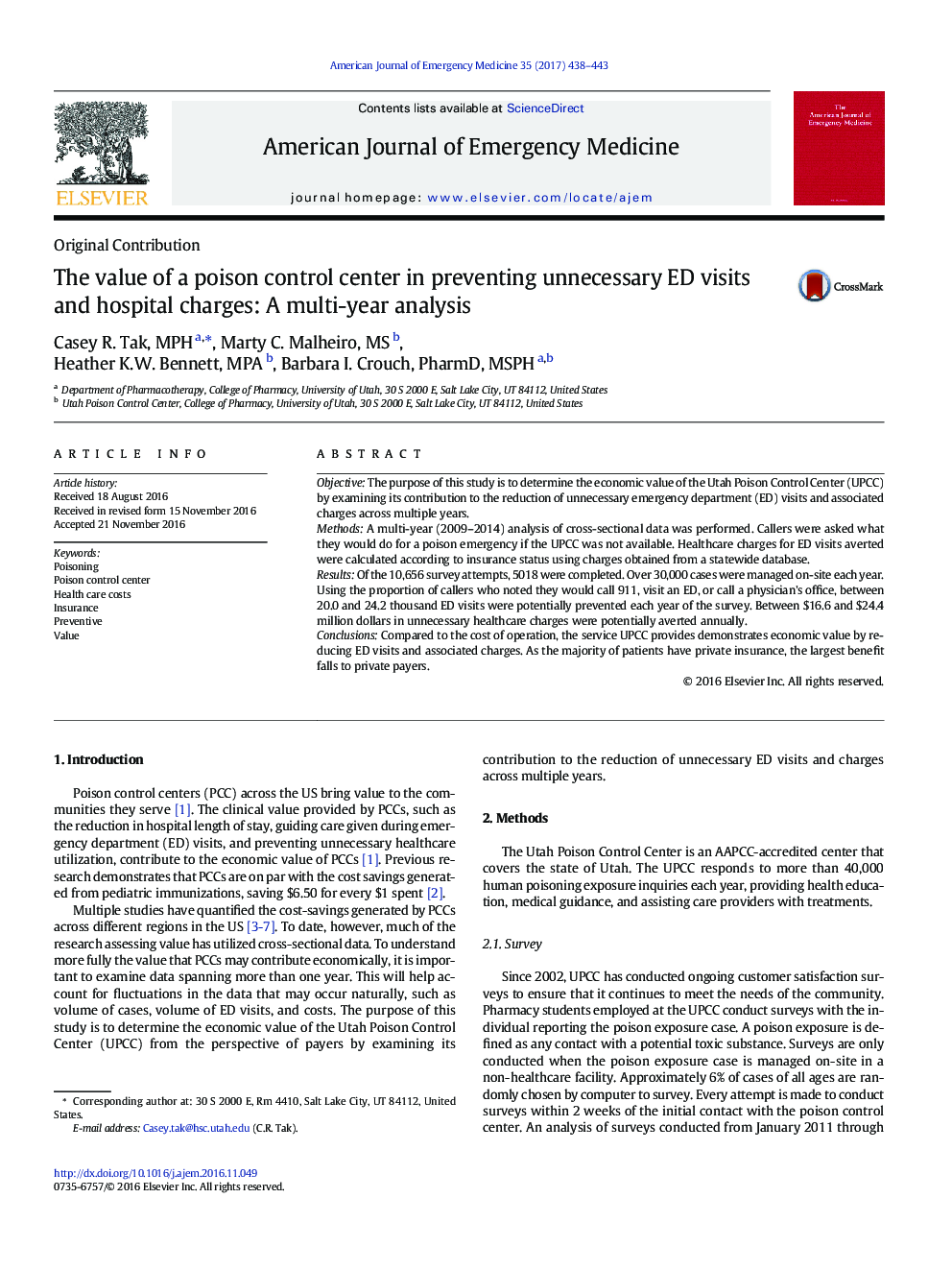| Article ID | Journal | Published Year | Pages | File Type |
|---|---|---|---|---|
| 5650961 | The American Journal of Emergency Medicine | 2017 | 6 Pages |
ObjectiveThe purpose of this study is to determine the economic value of the Utah Poison Control Center (UPCC) by examining its contribution to the reduction of unnecessary emergency department (ED) visits and associated charges across multiple years.MethodsA multi-year (2009-2014) analysis of cross-sectional data was performed. Callers were asked what they would do for a poison emergency if the UPCC was not available. Healthcare charges for ED visits averted were calculated according to insurance status using charges obtained from a statewide database.ResultsOf the 10,656 survey attempts, 5018 were completed. Over 30,000 cases were managed on-site each year. Using the proportion of callers who noted they would call 911, visit an ED, or call a physician's office, between 20.0 and 24.2 thousand ED visits were potentially prevented each year of the survey. Between $16.6 and $24.4 million dollars in unnecessary healthcare charges were potentially averted annually.ConclusionsCompared to the cost of operation, the service UPCC provides demonstrates economic value by reducing ED visits and associated charges. As the majority of patients have private insurance, the largest benefit falls to private payers.
